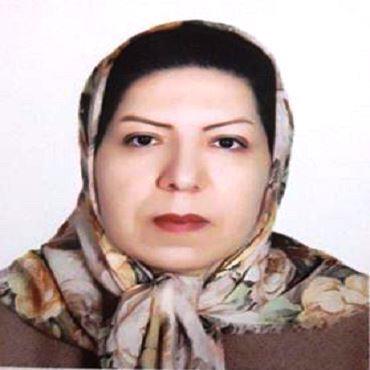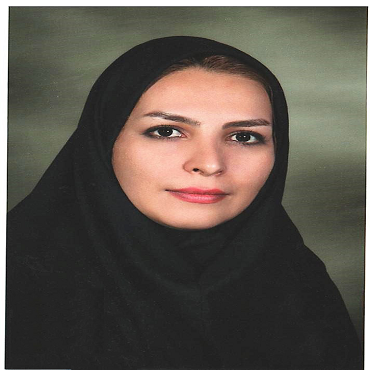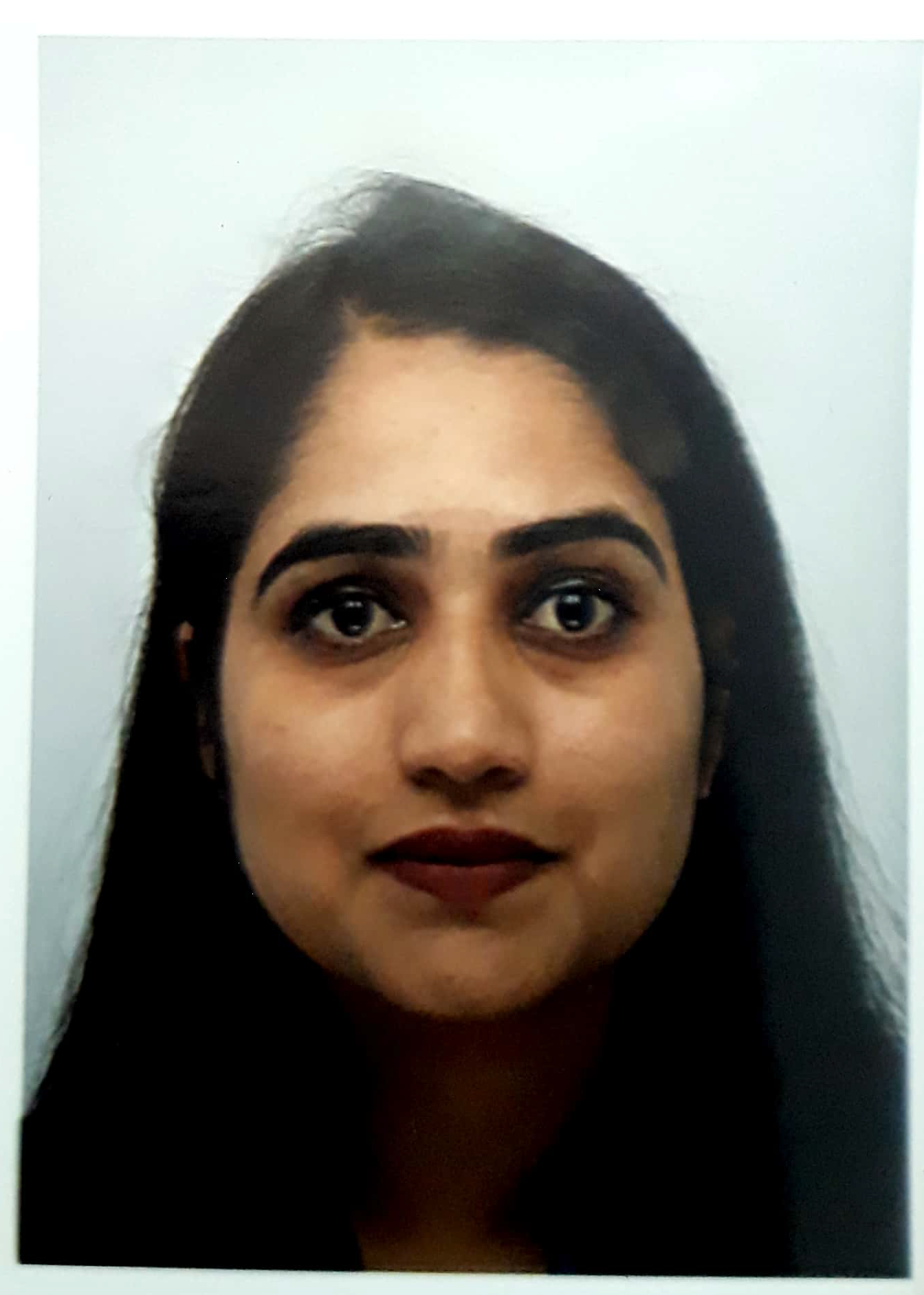Scientific Program
Keynote Session:
Title: New advances in electrical neuroimaging to evaluate EEG sources and brain networks
Biography:
Abstract:
Title: Signature of neuroinflammation from pathophysiology to machine learning
Biography:
Denis Gris completed his PhD in Neurosciences in 2007 at the Western University in London, Ontario, Canada. He then moved to the University of North Carolina at Chapel Hill where he studied the biology of pattern recognition receptors. In 2011, he established his laboratory at the University of Sherbrooke. He has published more than 30 papers in reputed journals and has been serving on several editorial boards. His primary interests are neuroimmunology and machine learning.
Abstract:
Neuroinflammatory changes constitute substrate and precede appearances of behavioural changes. By the time such changes are detected pathophysiological processes within the CNS often irreversible. Therefore, early detection of neuroinflammation will allow faster and more successful treatments. It is especially relevant for multiple sclerosis (MS) patients in whom diseases return periodically. We have used a novel model of spontaneous MS-like disease in mice to study early mechanisms of the disease and to find the behavioural signature of approaching autoimmune attack. Using comprehensive automated video analysis followed by machine learning algorithms we have dissociated general sickness behaviour from behavioural changes associated with activation of innate immune response in the CNS. Also, we found one of the mechanisms responsible for the initiation of multiple sclerosis.
Title: Fluorescent and T1 MRI active multilayer nanoparticle for imaging and targeting cellular delivery
Biography:
Oara Neumann is the J. Evans Atwell-Welch Research Scientist at Rice University (a fully funded, endowed research scientist position at the university). She has completed her PhD and Postdoctoral study in Applied Physics at Rice University, an MSc in Chemical Physics from Weizmann Institute of Science, Israel and a MSc in Analytical Chemistry from Bucharest University, Romania. She is the pioneer of nanoparticle-based solar thermal applications. She holds 12 patents and she has published more than 24 refereed articles and has an h-index of 16.
Abstract:
Multifunctional plasmonic nanostructures have enormous potential in the treatment of solid tumors; however, tracking particles with drug cargo and triggering the release of the cargo in mapped tumors is still impossible. To overcome this challenge we have developed an MRI and fluorescent active nanostructure nanomatryoshka. This new nanostructure with IR plasmonic signatures is composed of a 50 nm Au core surrounded by dye molecules and Gd(III)-DOTA chelate doped SiO2 inner-shell and an outer Au shell. The experimental results demonstrates an enhanced T1 relaxation (r1 ~ 24 mM-1 s-1 at 4.7 T) compared to the clinical Gd(III)-DOTA chelating agents (r1 ~ 4 mM-1 s-1). Further, this design preserves the fluorescence signal (65%) after 24 hours of exposure, leading to enahanced fluorescence photostability (23x). This dual-imaging functionality nanosystem increases MRI sensitivity by concentrating Gd(III) ions into the Gd-NMs, reduces the potential toxicity of Gd(III) ions and dye molecules by preventing their release in vivo through the outer Au shell protection, and the terminal gold layer surface can then be functionalized to increase cellular uptake, circulation time, or thermal drug-release properties.
Title: Fluid bed pelletization systems: CPS and Wurster technologies
Biography:
Zafar Iqbal has over 28 years of Formulation and Process development experience with strong business and technical skills. He has a successful track record of formulation and process development of difficult-to-craft modified release dosage forms and novel drug delivery systems. Prior to Glatt, he led various formulation and process teams at Barr Laboratories and Teva Pharmaceuticals and demonstrated his leadership and management skills.
Abstract:
Granulation using fluid bed rotor processing has proven economical and manufacturing advantages to produce a high quality product targeting the desirable product profile for various dosage forms. Producing pellets using Glatt’s patented CPSTM technology has been a cornerstone of drug development for multiparticulate systems. Well defined granules developed from active pharmaceutical ingredients (API) and other powders mixture to form multiparticulate systems such as pellets are an ideal platform for modified release dosage forms which can be administered as tablets, capsules or powders to patients. Spherical form of pellets is known to improve the powder flow, uniform particle size distribution and reduce contact surface area between particles as potential advantages. Applications for multiparticulate systems have been increasingly favored over single-unit dosage forms as a result of benefits such as controlled modified release of drugs via different dosage forms to target patient demographics. Coating process using fluid bed systems have been widely accepted process in applying uniform polymer coating onto multiparticulate systems. An overview of Wurster fluid bed equipment to understand formulation and process considerations in developing finished pharmaceutical dosage forms will be discussed.
Title: New onset of diabetes mellitus among patients on statin therapy among patients an outpatient clinic in Andkhoy, Afghanistan.
Biography:
Mohammad Shoaib Hamrah received his MD degree from Kabul Medical Institute, Afghanistan. He completed his Master’s in Healthcare Administration from Nagoya University Graduate Schoolof Medicine. He holds a PhD in cardiology from the same university. He joined as head of Qarmqul Mother Child Clinic in Afghanistan in 1992.He also worked as an internist at Andkhoy District Hospital in Afghanistan. He joined as head of Internal Medicine Department at Andkhoy Hospital in Afghanistan.
Abstract:
Statement of the Problem: Statins are the best-known and most widely used cholesterol lowering drugs around the world. Statins decrease cardiovascular morbidity and mortality in patients with and without ischemic heart disease. Statins are generally well tolerated by most patients. However, some adverse effects are associated with this group of medications. Recently, interest has been raised on the risk of new-onset of diabetes mellitus with statin treatment. In 2012, the US Food and Drug Administration has made new safety label changes for cholesterol-lowering statins concerning increased risk of haemoglobin A1 c (HB A1c) and fasting blood sugar. This study was conducted to investigate the association between statins and the incidence of new onset of diabetes among patients treated with statins in an outpatient clinic in Andkhoy, Afghanistan.
Methodology & Theoretical Orientation: The study was performed in an outpatient clinic in Andkhoy, Afghanistan. The case subjects included patients aged 40 years and above without diabetes who started statin therapy from Jan 2016 to December 2016. Patients with established diabetes before the start of statin therapy were excluded.
Findings: In total 270 patients were investigated. Of these, 95 were statin users and 175 nonstatin users. The incidence rates of new onset of diabetes were 15% and 2.6% in the statin users and non statin users, respectively. The risk of new onset of diabetes among statin users (HR 1.9, 95% confidence interval(CI) I 1.0-3.9).Conclusion & Significance: t is concluded that all statin treatment is associated with an increased risk of NODM in in an outpatient clinic in Andkhoy, Afghanistan. Therefore, the screening for diabetes mellitus is needed among patients under treatment with statins.
Title: Responsive nano based drug delivery systems: Development and application
Biography:
Dr. Deepa Patel is enthusiastic academician and an active researcher in field of Pharmaceutical Technology (GATE qualified). She has completed her Ph.D from The Maharaja Sayajirao University of Baroda, Vadodara. Her research interests primarily focus on developing and translating new drug delivery systems for the prevention and treatment various diseases such as Cancer, HIV and Asthma. She has a special interest in inter-disciplinary research and project with industries and other academic Institutes. She has published 09 research papers in high Impact factor journals. She has filed 05 Indian patent applications in field of Novel Drug Delivery Systems and published 03 International book chapters to her credit. Currently she is working on a funded research project approved by Gujarat Council on Science and Technology (GUJCOST), Gandhinagar. She presented her research paper in 06 international conferences (organized in USA and Canada). She has guided 34 post-graduate students. Currently she is guiding 05 Ph.D students. She has been awarded International conference grant from ICMR and travel grant from Department of Science and technology (DST) and Department of Biotechnology (DBT). She got “Scholar In Training Award” (2000$) from American Association for Cancer Research (AACR), USA for best paper. Currently, she is working as an Associate Professor in Pharmaceutics Department, Faculty of Pharmacy, Parul University. Along with her teaching duties, she serves as an Instrument and Chemical In charge, NBA coordinator and Time Table coordinator duties. She has 7 h-index and 235 citation in scopus and 9 h-index and 380 citation in Google Scholar.
Abstract:
The aim of the present investigation was to enhanced topical administration of astaxanthin from activated nanogel. A nanogel based on co-polymerized N-isopropylacrylamide (NIPAM) and butylacrylate (BA) was synthesized, characterized and loaded with astaxanthin by using emulsion polymerization method. Activated nanogel were evaluated for organoleptic characteristic, morphological characteristics, gelling property, particle size, zeta potential, percent drug entrapment, swelling ratio, viscosity, thermal analysis (differential scanning calorimetry), transmission electron microscopy (TEM), in vitro drug permeation on rat skin using franz diffusion cell, skin irritation on rat skin and stability. Solubility of drug was found to be maximum in 1.5 % w/v concentration of sodium lauryl sulphate solution. Activated nanogel shows good organoleptic properties. Transmission electron microscopy confirms the nanogel particles were monodisperse by having uniform size and spherical shape. The image also serves to validate the purification step, by the absence of extraneous particulates. Particle size, zeta potential, percent drug entrapment, gelling capacity, viscosity and swelling ratio was found to be 464.90±2.02 nm, -31.7±2.66 mV, 97.19±0.02 %, good, 16,000±707 cps and 13.88±0.16 respectively. Differential scanning calorimetry indicated that the lower critical solution temperature for poly (N-isopropylacrylamide-co-Butylacrylate) in deionized water was found to be 31.1ËšC and it produced temperature sensitive property. In vitro permeation of optimized batch on rat epidermal membrane using in franz diffusion cells, followed by the addition of saturated aqueous sodium carbonate demonstrated de swelling over the range 25-37ËšC, provided a astaxanthin flux of 1.69±0.03 µgcm-2h-1 which increased to 0.20±0.0015 µgcm-2h-1 upon the addition of saturated aqueous sodium carbonate up to 24 hrs. Which suggested the novel mechanism is proposed whereby the change in temperature experienced by the nanogel as it penetrated skin induced de-swelling and expulsion of astaxanthin in situ. In vitro skin irritation study indicated that no irritation on rat skin. Stability study indicates the developed nanogel was stable at 4-8
- 2°C /45 ± 5% RH (Refrigerated) condition after 1 month. In the conclusion activated nanogel provide nanosized particle size with good percent drug entrapment, increasing flux through skin and better
Title: Causality assessment methods of hepatic adverse drug reactions: Opportunities for enhancement
Biography:
Bassem Toeama received his MD degree from Cairo University, Egypt. He has worked in clinical medicine as an oncologist, in academia, and in pharmaceutical industry over the past 20 years. His experience has been primarily in oncology, pharmacovigilance, clinical research, and lab research. He holds an MSc degree in Experimental Therapeutics at the University of Oxford, UK and an MSc degree in Experimental Medicine at McGill University, Canada. He is a PhD candidate in health technology assessment at the University of Toronto, Canada. Bassem is a pharmacovigilance consultant, a clinical research instructor, and a lead medical writer.
Abstract:
Causality assessment of hepatic adverse drug reactions is pivotal for patient safety. Methods for causality assessment of hepatic adverse drug reactions include global introspection, algorithms, and probabilistic analysis. Algorithms are different and show variable inter-rater and multi-rater agreements. Naranjo, WHO-UMC, Roussel-Uclaf, Maria and Victorino, and Drug-Induced Liver Injury Network are few examples of the algorithms used in assessment of causality for drug-induced liver injuries. Comparison of these algorithms demonstrates the advantages and limitations for each.
Recent algorithms that introduce pharmacogenetics in causality assessment of hepatic adverse drug reactions haven’t been practiced on a wider scale yet. Reliability of their probability scores is questionable. Theoretically, drug-induced liver injuries can be predicted with a highly sensitive and specific robust causality assessment method that integrates pharmacogenetics with pharmacovigilance and applies a holistic approach.
Challenges that face the development of this algorithm are numerous and may include understanding of gene regulation and DNA-protein interaction, knowledge of computational tools as next-generation sequencing and bioinformatics, and streamlining genetic and safety data collection.
Pharmacogenetics-based algorithms used for causality assessment of hepatic adverse reactions have a potential invaluable impact on drug development. Applying the valid reliable data and probability scores generated by these novel algorithms will enhance the cost-effectiveness analysis of microdose clinical trials and reflect on selection of the next in sequence drug candidate.
Title: Controlled and targeted drug delivery systems using nano-magnetic base polyurethane polymers
Biography:
Samira Jafari received her master’s degree in analytical chemistry from the University of Tabriz and is currently pursuing her doctorate of chemistry in the analytical area at Imam Khomeini International University. In addition to her master’s degree, Samira is well travelled in her schooling and as such has acquired a wide range of different chemistry styles. With this experience, she gleaned and culminated a wide scope of techniques to develop a novel method for targeting various cancers efficiently with relatively low costs as compared to customized patient medicines. With a generic customized cancer drug delivery system as described in her work, a new field of focus is presented that can make large strides in the fight against breast cancer.
Abstract:
Polyurethanes have great variety of physical and chemical properties due to their different building blocks in their structure which make them possible for different biomedical and pharmaceutical applications. The most important application of these polymers is as a biocompatible, smart and controllable drug carrier which direct the anticancer drugs sufficiently to the cancerous cells for solving the problem of inadequate drug cargo with less side effects to the cancerous tissue cells. In this article, a kind of new drug delivery system is introduced which is smart controllable (pH-sensitive) multifunctional magnetic polyurethane(SCMMP) nano composite composed of isocyanate as a main chain and Cyclodextrin as a chain extender with the magnetic nano particles in their structure. Then Consequently, The bulk structure, size and morphology and magnetic characteristic of the synthetic nano-composite was characterized through different accepted analytical techniques such as FT-IR, TGA, XRD, TEM, SEM, DLS and VSM respectively. The SCMMP was used for loading tow effective currently used pharmaceutical cancer agents of Metatroxate and doxorubicin with high loading efficiency of 87% and 89% respectively. Dual drug loaded nano composite release behaviour was investigated in three different pHs of 4.5, 5.4 and 7.4. According to the concentration profile, low release percentage in the pH=7.4 for long term circulation and good stability in blood stream and high release in pH of 4.5 and 5.4 for improving vast variety of cancerous cells in physiological media were observed. Thereupon, new drug carrier system have great efficacy for cancer therapy. The MTT calorimetric method was used to track the presented nano composite eligibility as a polymer based drug delivery system. Different cellular tests of MTT assay, DAPI staining, cellular uptake and cell cycle was done on Nan composite/DOX/MX combination versus free DOX/MX to validate it as a nano carrier. Biocompatibility of the nano carrier was done using hemolysis assay through checking on human red blood cells (HRBCs) with very fine results. According to the results, introduced system is very effectible one for delivering synchronous therapeutic agents of DOX and MX to the cancerous cells and on other hand for in vivo usage in the future.
Title: Nanosuspension coating: An efficient technique for designing of controlled porosity osmotic drug delivery systems (CPOPs)
Biography:
Javad Shokri has a PhD degree in Pharmaceutics from Tehran University of Medical Sciences (TUMS, 2001). He has published two scientific books and over 50 indexed research articles in novel drug delivery systems, Transdermal Drug delivery and cosmeticology. He acts as the Head of the Dermatology and Dermopharmacy Research Team (DDRT) at Tabriz University of Medical Sciences (2013-presnt) and editorial board of BioImpacts Journal. His present position is full professor in pharmaceutics department in Tabriz University of Medical Sciences (TUMS), Tabriz, Iran.
Abstract:
Oral osmotic drug delivery system have been focused by many researchers in recent years due to their advantages such as independency of drug release to pH, presence of food and other physiological factors over traditional dosage forms. Controlled porosity osmotic pump (CPOP) is one of the most practical and efficient types of osmotic pumps. In CPOPs, hydrophilic materials or polymers are used for producing of microscopic pores in semipermeable membrane (SPM) acts as drug release ports after exposing of system to aqueous medium of gastro intestinal tract. An important challenge in formulation of CPOPs is finding a single solvent(s) system with a capability to dissolve both film former (hydrophobic) and pore former (hydrophilic) simultaneously in coating liquid. Therefore, the aim of the present investigation was to tackle the issue associated with CPOP system using nano-suspension coating method. By using of this technique, we can use of very highly water-soluble pore formers in the form of nanoparticles in SPM formulation. In the present study 4-Amino pyridine was used as a highly water soluble drug. In this method, a hydrophilic pore former (sucrose or mannitol) in nano-range was suspended in polymeric coating solution using ball-mill. The performance of the prepared formulations was assessed in terms of D12h(cumulative release percent after 12 h), Devzero(mean percent deviation of drug release from zero order kinetic), tL(lag time of the drug release) and RSQzero order. The results revealed that gelling agent amount (HPMC E15LV) in core and pore former concentration in SPM had crucial effect on SPM integrity. All the optimized formulations showed a burst drug release due to fast dissolving nature of the pore formers. Results obtained from scanning electron microscopy demonstrated the formation of nano-pores in the SPM where the drug release takes place via them. Nano suspension coating method can be introduced as novel method in formulation of CPOPs.
Title: SYBR Green II dye-based real-time assay for measuring inhibitor activity against HIV-1 reverse transcriptase
Biography:
Chakradhar Pokkula is a research associate at Telangana university. He received master’s​ degree​ in Infection Biology from Uppsala university, Sweden and Bachelor’s​ degree in Microbiology from Osmania university, India. He worked as a research assistant in Uppsala academic hospital. His recent publication includes Kokkula C, et al. (2016) SYBR Green II Dye-Based Real-Time Assay for Measuring Inhibitor Activity Against HIV-1 Reverse Transcriptase, Mol Biotechnol. His current research interests include development of antiviral agents for dengue virus strains and vaccines for emerging viruses.
Abstract:
There are arrays of in vitro assays to quantify the activity of HIV-1 reverse transcriptase (HIV-1 RT). These assays utilize either chemically customized/labelled nucleotides, or TaqMan probes, or radiolabeled nucleotides/primers. Although several real-time PCR assays exist commercially for measuring the RT activity, which are usually used for quantifying the viral titres, these assays are not optimized for measuring the inhibitory concentrations (IC50) of HIV-1 RT inhibitors. Moreover, a recently established inorganic pyrophosphate-coupled enzyme assay cannot be employed for studying nonphosphorylated nucleoside reverse transcriptase inhibitors (NRTIs). In the present study, we have developed a novel one-step assay with native nucleotide substrates and SYBR Green II dye to determine IC50 values of triphosphorylated NRTIs against HIV-1 RT. Using exact batches of wild-type and mutant RT, and triphosphorylated NRTIs, we showed that our method gave IC50 values for inhibitors similar to that of an earlier published colorimetric assay with BrdUTP substrate (CABS). Our assay should be suitable for high-throughput screening of antiretroviral drugs and could also be suitable for studying drug resistance profiles. Additionally, we also used our assay to study inhibition by AZT in its nonphosphorylated form by supplementing the reaction mixture with necessary kinases and ATP.
Oral Session 1:
- Pharmacovigilance | Pharmaceutical Regulatory Affairs | Drug Delivery System and Nano Technology | Drug Design and Drug Formulation

Chair
Oara Neumann
Rice University
USA

Co-Chair
Bassem Toeama
University of Toronto
Canada
Title: Global approach to good pharmacovigilance and risk management
Biography:
Danny S Gonzalez is currently a Pharmacovigilance Process Leader at Genentech. He contributes to the development of innovative, global risk management strategies across the Roche/Genentech portfolio. Prior to joining Genentech, he was working with the Food and Drug Administration’s (FDA) Office of Regulatory Policy where he consulted on the implementation of FDA risk management policies for both pre-approved and post-marketed products. Before this experience, he worked with the FDA’s Division of Risk Management where he was responsible for developing risk management programs, assessing modifications to risk minimization strategies, reviewing proposals for single shared system risk evaluation and mitigation strategies (REMS), and designing research to examine current risk management practices. He began his career as a Safety Scientist in Sanofi’s Global Pharmacovigilance and Epidemiology team where he contributed to the development of global risk management plans, assessed potential safety signals, and contributed to risk management research. He is originally from Miami, Florida and received his master’s degree in Biomedical Engineering from Florida International University and a Doctor of Pharmacy degree from the University of Florida.
Abstract:
Since its beginning, pharmacovigilance (PV) has undergone continuous transformation. Policy, legislation, and guidelines have continued to evolve over time to better ensure patient safety and improve monitoring of the safety of medicinal products. Since 2012, the European Medicines Agency (EMA) committed to continuously improve their guidance based on stakeholder experience.​ In 2013, the EMA released draft guidance on risk management systems for public consultation in February 2016. ​The guidance was further developed with feedback from a wide variety of stakeholders including marketing authorisation holders, industry associations, national healthcare system representatives, and individual citizens, among many others.​​This GVP guidance has a significant impact on how pharmacovigilance and risk management is conducted around the world. Recently, the EMA has published significant changes to European Union’s PV guideline on risk management plans (GVP Module V). These updates aim to further clarify the activities on which a PV described in a risk management plan should focus to ensure optimal health promotion and protection based on a risk-proportionate planning of activities that directs resources to areas where the need for additional information and risk minimisation is greatest.​The main topics presented include the definition and life cycle of safety concerns (important identified risk, important potential risk, and missing information) as well as removal of duplication within a RMP, and alignment with other regulatory documents.
Title: Causality assessment methods of hepatic adverse drug reactions: Opportunities for enhancement
Biography:
Bassem Toeama received his MD degree from Cairo University, Egypt. He has worked in clinical medicine as an oncologist, in academia, and in pharmaceutical industry over the past 20 years. His experience has been primarily in oncology, pharmacovigilance, clinical research, and lab research. He holds an MSc degree in Experimental Therapeutics at the University of Oxford, UK and an MSc degree in Experimental Medicine at McGill University, Canada. He is a PhD candidate in health technology assessment at the University of Toronto, Canada. Bassem is a pharmacovigilance consultant, a clinical research instructor, and a lead medical writer.
Abstract:
Causality assessment of hepatic adverse drug reactions is pivotal for patient safety. Methods for causality assessment of hepatic adverse drug reactions include global introspection, algorithms, and probabilistic analysis. Algorithms are different and show variable inter-rater and multi-rater agreements. Naranjo, WHO-UMC, Roussel-Uclaf, Maria and Victorino, and Drug-Induced Liver Injury Network are few examples of the algorithms used in assessment of causality for drug-induced liver injuries. Comparison of these algorithms demonstrates the advantages and limitations for each. Recent algorithms that introduce pharmacogenetics in causality assessment of hepatic adverse drug reactions haven’t been practiced on a wider scale yet. Reliability of their probability scores is questionable. Theoretically, drug-induced liver injuries can be predicted with a highly sensitive and specific robust causality assessment method that integrates pharmacogenetics with pharmacovigilance and applies a holistic approach. Challenges that face the development of this algorithm are numerous and may include understanding of gene regulation and DNA-protein interaction, knowledge of computational tools as next-generation sequencing and bioinformatics, and streamlining genetic and safety data collection. Pharmacogenetics-based algorithms used for causality assessment of hepatic adverse reactions have a potential invaluable impact on drug development. Applying the valid reliable data and probability scores generated by these novel algorithms will enhance the cost-effectiveness analysis of microdose clinical trials and reflect on selection of the next in sequence drug candidate.
Title: Co-delivery of quercetin and paclitaxel drug via tri-block (PEO-PPO-PEO), PVP57-PVA30-PEG13 and di-block (PVP-PVA) copolymeric mixed micelles for drug resistant breast cancer
Biography:
Pankaj Singla is pursuing PhD under the supervision of Prof. R. K. Mahajan from GNDU, Amritsar India and currently he is working as Visiting PhD scholar under the supervision of Dr. Marloes Peeters in Manchester Metropolitan University, Manchester UK. His area of interest is studying of delivery of hydrophobic drugs vs. anticancer drugs, and antiepileptic drugs via polymeric based nanoparticles.
Abstract:
Breast cancer is the second most common cancer worldwide after lung cancer and the fifth most common cause of cancer death in women. The worldwide weight of breast cancer surpasses every single other cancer and the frequency rates of cancer are expanding. In light of these grim statistics, we have developed novel PEO13-PPO45-PEO13 and PVP111-PVA86, PEO13-PPO45-PEO13 and PVP57-PVA30-PEG13 mixed micelles for the co-delivery of Quercetin (QCT) and Paclitaxel (PTX) for the treatment of Drug-resistant breast cancer. Pure and mixed nano-micelles were prepared using the direct dissolution method and characterized by fluorescence spectroscopy, dynamic light scattering (DLS) and scanning electron microscopy (SEM). UV-visible spectroscopy as well as the High performance liquid chromatography (HPLC) has been employed to screen the loading of anticancer drugs in different ratio of mixed micelles. We observed that loading of anticancer drugs in mixed micelles is higher than that of the pure polymeric micelles. The locus of solubilization of the anticancer drugs (QCT and PTX) in these polymeric micelles has been adjudged by 1H NMR spectroscopy. In-vitro drug release of the prepared formulations was performed using dialysis release methods. Cytotoxicity assay of prepared formulations was also performed on MCF-7 and triple negative breast cancer cell line MDAMB-231 to find out the anticancer activity. Furthermore, mixed micelles showed a significant increase on QCT and PTX cellular uptake in comparison with pure pluronic micelles and free drug in all cell lines assayed.
Title: Formulating extended release drug pellets using CPSâ„¢ technology
Biography:
Neha Chavan is a Formulation Scientist for Glatt Air Techniques, Pharmaceutical Services Division and has been a frequent speaker and presenter at pharmaceutical conferences. Her area of interest is developing novel pelletization techniques and coating applications for modified release of the pharmaceutical drug products for oral drug delivery. She is passionate about her recent patent on developing Cannabinoids as a drug delivery system using lipid based systems as an alternative to growing opioid epidemic. She graduated with a PhD in industrial pharmacy from St. John’s University, New York in 2016 specializing in lipid based drug delivery systems and studying the mechanistic transport of drugs across the gastrointestinal cell lines. She is a Coordinator and an active contributor on various committees within American Association of Pharmaceutical Scientists.
Abstract:
Producing pellets using Glatt’s patented (Complex Perfect Spheres) CPS™ technology has been recognized as one of the most efficient direct pelletization processes which has recently gained a great deal of attention because of its quick processing time, high drug loading, and its ability to yield a wide range of mean particle sizes with narrow distributions. The pellets can be filled in capsules, or compressed in tablets or packaged in sachet as the final dosage form. Traditionally, mixture of active pharmaceutical ingredients (APIs) and inert cellulose substrates are directly pelletized in the CPS™ processor to formulate drug loaded pellets which are subsequently coated using controlled release polymers in Wurster fluid-bed processor to achieve the desired drug release profile. The purpose of the study was to develop a unique modified release pellet formulation which can be manufactured using the direct pelletization process in the CPS™ insert and thus eliminate the complicated and time consuming multilayer subsequent coating processes like drug layering, protective, and functional coating to achieve extended release or delayed release profile and thereby significantly reduce the development, processing time and costs.
Methods: Hydroxypropyl cellulose (HPC) is used in the formulation as a matrix forming polymer, Microcrystalline Cellulose (MCC) as the diluent and the pellet former and Propranolol as the Model drug. Upon preliminary screening, formulation experiments were performed using the formulation with varying concentration of HPC (10%, 20%, 30%, 40% and 50% w/w) adjusted with MCC for a fixed Propranolol HCl loading of 20% w/w. Each formulation was pelletized in GPCG 1.1 fitted with a CPS-3 inserts. Effect of matrix forming polymer concentration was evaluated based on pellet size, shape, morphology, drug content and dissolution profile. Pellet size was measured using sonic sifter sieving analysis. The surface morphology was evaluated using Scanning Electron Microscopy (SEM).
Results: Formulation composition for the CPS™ pellets manufactured is given in table 1. The formulations utilized a fixed Propranolol HCl loading of 20% w/w. HPC as a matrix forming polymer was added to the formulation composition in an increasing concentration of 10%, 20%, 30%, 40% and 50% w/w. MCC was added in the formulation to form pellets in the CPS™ process. Pellets from all five formulation trials were found to be granular with distinct surface morphology. The particle size of the granular pellets was measured to be within a size range of 500-710 microns as shown in table 2. Pellet growth was observed as shown in figure 2 detected using the digital imaging technique. Surface morphology of pellets was found to be granular observed under SEM as shown in figure 3. Drug content for Propranolol HCl in the granules was greater than 95% w/w of the theoretical drug loading suggesting an efficient loading process. Dissolution profile as shown in figure 4, obtained from the samples indicated that Propranolol pellets containing 50% HPC exhibited a release profile that was extended over the period of 24 hrs.
Conclusion: In the current study, a novel formulation platform was developed using the direct pelletization CPS™ process which exhibited an extended release profile for Propranolol HCl over 24 hours. This one-step direct pelletization approach can be utilized to formulate a modified release multiparticulate dosage form using the CPS™ technology for many APIs especially those which are unstable in coating dispersion and thereby minimizes formulations and process challenges, development time, processing hours and cost involved.
Title: Effect of an intermittent photic stimulation (IPS) on electroencephalogram (EEG) of females with premenstrual dysphoric disorders (PMDD)
Biography:
Binu Shrestha is an Assistant Professor at Trinity School of Medicine as Instructor in the Department of Neuroscience. Prior to coming to Trinity, she was working in as Assistant Professor at Nepalese Army Institute of Health Sciences, Kathmandu, Nepal. She received her Medical degree (MBBS) from College of Medical Sciences, Bharatpur, Nepal. She completed her three years Residency in Basic and Clinical Physiology from BP Koirala Institute of Health Sciences, Dharan, Nepal. She also had received Advanced Neuroscience Training at Monash University under IBRO. Binu’s teaching includes teaching medical students Neuroscience and Cell molecular Biology. After graduating as medical doctor she got interest on academic and research activity more than clinical practice. She is currently working on the research project “Prevalence of Diabetic Neuropathy among the populations of St. Vincent and the Grenadines”, “Effect of Personality on Personal Burnout in Trinity School of Medicine Students”. She is also doing course on Essential Skills Medical Education. Her research interests are in the field of Neuroscience, Electrophysiology, Medical education.
Abstract:
Many women with regular menstrual cycles report unpleasant physical and/or psychological symptoms just before the menstrual cycle begins. For many women, these symptoms are mild and tolerable. However, for some women, these symptoms can be disabling and may cause significant disruption in their lives and are often reasons for seeking a medical treatment. These symptoms together are called as premenstrual syndrome (PMS), and with the modern concept, the severe form of PMS is named as premenstrual dysphoric disorders (PMDD). The study was conducted on thirty females with PMDD, selected on the basis of inclusion and exclusion criteria, and research criteria, Diagnostic and Statistical Manual of Mental Disorders, 4th Edition (DSM-IV). All the participants were explained about the procedure and written consent was taken. Anthropometric and cardio respiratory variables were recorded followed by EEG recordings with 5, 10, 15, 20, 25, 30 Hz frequencies of intermittent photic stimulation. The first recordings were taken before menses started or during peak of symptoms reported and were repeated immediately after menses were over. EEG recordings were dissected out into its constituent frequency bands by Fast Fourier Transformation. The data of EEG power spectra were non-normally distributed, hence subjected to log transformation and statistical analysis was done. The EEG power spectra were expressed as mean ± standard deviation. Paired sample t test was used to compare the anthropometric, cardio-respiratory variables, and the premenstrual EEG power spectra with post menstrual EEG power spectra. The premenstrual EEG power spectra or the EEG power spectra during the peak of symptoms as compared to the postmenstrual EEG power spectra showed a significant (p<0.05) increase in Beta activity over frontotemporoparietal (F3, C3, T3 and P3) area of left hemisphere which concludes that the increased in beta activity at most of the sites of left hemisphere under intermittent photic stimulus before menses or during the peak of symptoms of PMDD is indicative of presence of anxiety, stress, insomnia, and obsessive or negative thought.
Title: The visual cortex and fusiform facial recognition connections revealed: non-invasive mapping with diffusion tensor imaging tractography on prosopagnosia in Alzheimer’s patients
Biography:
Christina Vadiyala is a medical student in an Eminent University in the Caribbean region Guyana, the Texila American University. She is an outstanding Junior Young Researcher in “Team NeurON” group from the same University. Her research area of interest is Neuroscience and Imaging tractography. She is leading a research sub-group within the Team NeurON. She also involved in more than 15 research activities in Team NeurON, and also she has been serving as Secretary and Coordinator for the same Team NeurON group in Texila America University.
Abstract:
Prosopagnosia is a common sign in Alzheimer disease (AD), especially characterized by the loss of familiar face recognition in the earlier stage. Brain regions dedicated to human face processing include Amygdala, Fusiform Face Area (FFA), Occipital Face Area (OFA), a region of ventro-medial temporal cortex and superior temporal sulcus. Early visual analysis of facial features occurs in the visual cortex and Superior Temporal Sulcus (STS). Invariant aspects like similar Face recognition is processed in the lateralusiform gyrus, which is interconnected with temporal lobe, where specific information about name and biographical data are retrieved. The Diffusion tensor images (DTI) datasets were obtained from 25 control and 25 Alzheimer patients of both the sexes, with age group from 50 to 75 years. Study aimed to identify the neural structural connectivity analysis in failure of familiar face recognition in Alzheimer’s Patients. Also, correlates its functional importance, using “Non-Invasive Diffusion Imaging fiber Tractography”.
Results: Analysis of tracts from visual cortex to inferior temporal lobe showed decrease in number and increase in the length of the tracts in Alzheimer’s patients when compared to normal (DTI). Tracts reaching fusiform are greatly varied. Variation in the number and volume of connectivity fibers between the visual cortex with fusiform gyrus are primarily identified in right hemisphere than left hemisphere.
Conclusion: As the tracts reaching the fusiform gyrus are deteriorated, it interprets in the atrophy of fusiform gyrus which leads to the absence of Familiar Face Recognition in AD patients.
Title: Promoting psychosocial wellbeing following stroke: The Roy’s adaptation model approach
Biography:
Bibi Maleki has completed her Master Science in Nursing at the age of 35 years nursing and Midwifery, Isfahan University of Medical Sciences, Isfahan, Iran. She is the instructor and research employee of Research center of Nursing and Midwifery Care, Department of Nursing and Midwifery, Isfahan University. She has published some papers in Iranian reputed journals.
Abstract:
Cerebrovascular accident (CVA) is a chronic disease which influences different aspects of human’s life such as the psychological and social dimensions. The patients’ recovery of balance in these dimensions needs proper and pre-planned care. Therefore, the objective of present study is to examine the effects of a care plan upon the extent of patients’ compatibility with psychosocial dimensions in reference to Roy’s adaptation model and from biological aspect. The present study is based on a clinical trial of 50 CVA patients in selected hospitals of Isfahan during 2014-2015. The studied units are selected through accessibility sampling and randomly assigned to two groups of similar size. The necessary data is collected through researchers’ developed form of recognition and review of Roy’s model. The care plan is developed based on the incompatible behaviors and their stimuli which is implemented for the test group and follow-up study was also done. The control group receives routine cares. The collected data is analyzed through SPSS Software (version.18) and the statistical tests are analyzed. The mean score of compatibility before intervention in the two groups shows no significant difference in regard to psychological adjustment (i.e. self-perception, independence-dependence) and social dimension (role-playing) but a significant difference is found after intervention in the two groups (P<0.001). The application of designed care plan based on Roy’s adaptation model with holistic approach and the cares based on cooperation among the units leads to enhancement of psychosocial dimensions among CVA patients.
Title: An attempt on simplification of strange human visual perception of physical world
Biography:
Anjana Chowdary Elapolu is a medical student in an Eminent University in the Caribbean region – Guyana, the Texila American University. She is an outstanding Junior Young Researcher in “Team NeurON” group from the same University. She is basically from India, migrated to Guyana for her Medicine study and Research activities. Her area of interest is Cognitive neuroscience and Imaging tractography. She is working over the cognitive aspect of Neuroscience, and also involved in research sub-group of Team NeurON. She also is serving as Young Research Coordinator (YRC) for the same Team NeurON group in Texila America University.
Abstract:
Human has highly intellectual quality of perceiving the physical world through an immense sense of eyes called “Vision” and it is really mysterious in terms of “visual perception”. Visual perception refers to the interpretation of what we take in through our eyes. The information congregated by our eyes is processed by our brain, creating a perception that in reality, sometimes it does not match to the true image. In other words, brain acts on a strange way that the subjective perception of physical reality of objective state, while no form of illusion has actually been created by the object. The following are some of the strange aspects human visual perceptions are considered to attempt for some simplifications, which are luminance, colour, area, length, orientation, lines, angles, distance, depth, and motion. Though the perception of some of these aspects has been thoroughly studied, our knowledge of the rest is still shallow. Our perception is an amalgamation of various parameters of judgment. This study focuses on various such parameters that lead to the difference that occurs between objective appearance and subjective perceptions, these include – psychological, physiological, interpretational, empirical and neurological aspects. This study will assess which of these factors interact in order to deliver outputs different from reality under different conditions, and why our judgment is challenged by moderate variations in the background of our field of view, just how much do we depend on comparative analysis, and how reliable our judgment is in a situation where our comparative ability is challenged.
Title: Understanding the nature of consciousness and qualia using artificial intelligence
Biography:
Mahboobeh Parsapoor has a licentiate degree of information technology from Halmstad University where she has been a member of Center for Research on Embedded Systems (CERES) and she focused on developing a new type of data-driven models that is referred to as brain emotional learning inspired models (BELIMs). She is interested in conducting research on various topics include: computational intelligence, nonlinear system identification and classification, wireless communication and has published several articles in these subjects. She is in the reviewer panel of IEEE communication letter and Neural Networks Journal.
Abstract:
One of the big challenges in the field of cognitive neuroscience understands consciousness and its building blocks. The fact is that understanding consciousness can help cognitive neuroscientists understand the underlying procedure of the human brain to form a personal view of the world. It also can assist neuroscientists to figure out how the human brain process information, extract valuable message, form memory and expand knowledge. To do so, cognitive neuro-scientist have defined the terminology qualia and introduced it as a building block of consciousness. It has been stated that information messages which is extracted from basic sensory input as light, voice, etc. and represent it as information messages the basis of qualia is the basis of qualia. Qualia have been defined by philosophers and neuroscientists to explain introspectively accessible phenomenal aspects of our mental lives. However, the existence of qualia has been the sourse of conflicts between cognitive neuroscientists. The existence of their bearers”; 3) “How qualia relate to the physical world both inside and out- side the head”. In contrast, some scientists have agreed on existence of qualia and offered the following statements, 1) Does the perceptual knowledge of human have a material character of its own?; 2) Does it have some physical impacts, in particular on the brain ; 3) If it is what is the order of such impact? 4) Finally, how the brain can regulate those impacts. In our research, we have decided to take advantage of artificial intelligence (AI) in particular machine learning and deep learning to prove the existence of qualia. To do so, we have set up some experimental studies and recorded the electroencephalogram (EEG) of participants in the studies, and then we apply MLs to classify the data sets. of qualia has been denied on the basis of the following question: 1)”Which mental states have qualia”; 2) “Whether qualia are intrinsic qualities.
Keynote Session:
Title: Symbiosis of regulatory affairs and drug development to deliver high quality, safe and effective medicines
Biography:
Ramandeep Kaur is a post graduate in pharmacy and has more than 14 years of experience in Regulatory Affairs in pharmaceutical and biotechnological industry. She is well experienced in regulatory aspects of all phases of drug development, approval and life cycle maintenance. She has dealt with different types of submissions for a vast range of products for global markets. Currently, she is working as a Director in RegWeb Consulting Services Inc., Canada.
Abstract:
Regulatory Affairs plays a crucial role in the pharmaceutical and biotechnological industry and is involved in all stages of drug development, drug approval and life cycle maintenance of the product after approval. The Drug Discovery and Development cell in the industry is obligated to follow the strict regulations and guidelines issued by health authorities to develop the safe and effective medicines. Regulatory Affairs acts as an interface between the industry and the health authorities and provides strategic advice to ensure regulatory compliance at all stages. The drug development process is changed drastically from the last 2 decades due to new technological advancement in the science. With this advancement, the role of Regulatory Affairs is also broadened and strengthened. The Drug Discovery/Development and Regulatory Affairs have joined hands in the modern process of drug development for interpretation and application of regulations with a goal to provide high quality, safe and effective medicines to the patients
Title: Impact analysis of mandatory reporting of serious adverse drug reactions and medical device incidents on healthcare institutions following the 2014 amendment to the food and drug regulations (Vanessa's Law) in Canada
Biography:
Shereen Aly is a Physician & Pharmacovigilance expert. She received her Master and PhD degree in Critical Care Medicine in 2007 and also a holder of a master degree in pharmacovigilance and epidemiology from 7 affiliated European Universities under the EU2p Program. She is a true pioneer in her field and an author of many scientific publications. Her role focuses on being a medical advisor to healthcare providers, industry and regulatory agencies. Her priority is Post- Market drug surveillance relating to the collection, detection, assessment, monitoring and prevention of adverse effects with pharmaceutical products.
Abstract:
The study measures the national readiness of acute healthcare institutions for the adoption and implementation of the serious adverse event and medical device incident mandatory reporting process to meet the new Canadian drug law; Protecting Canadian from Unsafe Drug Act “Vanessa’s Law” set by Health Canada. An online survey questionnaire was designed to gain institutional insights on policy awareness, preparedness, systems and processes, resourcing and training measures taken for adverse event reporting and the potential challenges and benefits that would be faced when the law becomes implemented in December 2019. Analysis of the results indicated that 96.4 % of the respondents were unaware of Vanessa’s Law and its reporting requirements, 50% of respondents confirmed the preparedness of their respective institutions to implement the new ADR reporting requirement. In regards their information management sytems, 75% of respondents indicated they have a well-established reporting system in place to support the new regulation. Currently, ADR reporting within the healthcare institutions is an encouraged voluntary process. It has been identified that awareness of the new law is very low with no clear supporting guidance in place yet. Hospitals need a formal guidance from Health Canada upon which to base their operational procedures and in order to ensure that institutions can develop appropriate training and standard operational procedures for the reporting of mandatory ADR and medical device incidents. Health Canada needs to consider immediately implementing educational strategies to address this issue as well as a clear and descriptive supporting guidance before the law goes into full force.
Title: 3D constructive connectivity analysis in Alzheimer patients: Detecting structural alterations and their underlying substrates for optic ataxia in correlations with “How†stream visual pathways
Biography:
Ganesh Elumalai is an Assistant Professor of Anatomy and Neuroscience at the Texila American University, College of Medicine. He has received a distinguished Neuroscience, Medical Embryology and Histology Teacher award. His designation, decorates various positions in TAU-COM as Academic, Research, Chair in Program Evaluation Committee, Chair and Principle Investigator Team NeurON and Publishing activities that relate to teaching and research support.
Abstract:
Optic ataxia is a high order neurological deficit, mostly seen in Alzheimer’s patient which affects the posterior parietal cortex. These patients exhibit deficit for spontaneous eye hand coordination. Visual information is processed in two distinct routes dorsal and ventral streams, for (visual spatial recognition and perception). The interactions between dorsal and ventral streams are important for controlling, object-oriented hand movements. Previous studies unravel the substantial evidences, we Team NeurON focused to correlate its structural connectivity with Optic Ataxia in Alzheimer’s Patients correlating its functional importance, using “Diffusion Imaging fiber Tractography”. The study involves both the sex (DTI) datasets from 25 control and 25 Alzheimer patients, age group from 50 to 75 years.
Results: The fibers were traced, and identified for “Dorsal-how” stream pathways involved in visual objects spatial orientation. The neural structural connections, seen in “Dorsal” stream pathways, extending between the “Visual cortex (BA 18 & 19) with Superior Parietal Lobule (BA 7)”, shows visuo-motor coordination pathway or “how” stream pathways in visual perception. Observations on control groups (numbers and volumes) of fibres are higher at proportion in female than in male (Fig-1). In contrast it was observed that females displayed a much severe changes in (numbers and volumes) when compared with male’s patients (Fig-2).
Conclusion: The current observations, propose insight knowledge to understand Damage to “how” stream fibers in the Visual pathways, manifest as Optic ataxia in Alzheimer’s Patients. But, the findings need to be confirmed with functional MRIs analysis in future understandings.
Title: Solid lipid curcumin particles induce more cell death and inhibit autophagy mechanism than natural curcumin in different glioblastoma cells
Biography:
Panchanan Maiti has completed his PhD from Defence Research and Development Organization, Ministry of Defence, Govt of India under Bharathiar University and Postdoctoral Studies from Dept. of Neurology and Dept. of Medicine, University of California at Los Angeles, CA, USA. Currently, he is the chief research scientist of Field Neurosciences Institute, St. Mary’s of Michigan, and also hold adjunct faculty positions at Psychology, Neuroscience program, Central Michigan University, Dept. of Biology, Saginaw Valley State University and Laboratory instructor, brain research laboratory at Saginaw Valley State University, MI, USA. He has published more than 43 papers in reputed journals and has been serving as an editorial board member of several reputed journals.
Abstract:
Despite significant advancements in cancer therapies over the years, glioblastoma (GBM) remains largely incurable. Curcumin (Cur), a natural polyphenol, has potent anti-cancer effects against several malignancies, including metastatic brain tumors. However, its limited bio-availability reduces its efficiency for treating GBM. Recently, we have shown that solid lipid curcumin particles (SLCPs) have greater bio-availability and brain tissue penetration. The present study compares the efficiency of cell death by Cur and or SLCPs in cultured GBM cells derived from human (U-87MG) and mouse (GL261) or rat (F98) tissue. Several cell viability and cell death assays and markers proteins (MTT assay, annexin-V staining, TUNEL staining, comet assay, DNA gel electrophoresis, Western blot) and autophagy markers were investigated following treatment of Cur and or SLCP (25 μM) for 24-72 h. Relative to Cur, the use of SLCP increased more cell death, DNA fragmentation, produced longer DNA tails. Whereas, macroautophagy markers, such as Atg5, Atg7, Beclin-1, LC3A/B, mTOR, p-mTOR, as well as mitochondrial autophagy (mitophagy) markers, such as BNIP3/NIX, FUNDC1 and HIF-1α were inhibited by Cur and or SLCP. Furthermore, we found a greater inhibition of these markers in the case of SLCP-treated cells in comparison to Cur-treated cells. We did not find such inhibition in the case of control glial (C6-glioma) and neuronal cell line (N2a). Overall, our result suggests that SLCP can be used to inhibit GBM growth and proliferation more than natural Cur via inhibiting autophagy mechanism.
Oral Session 1:
- Neuroscience & Therapeutics: Recent Advance Treatment |Neuroimaging & Neuroinformatics | Behavioural Neuroscience & Neurophysiology| Neurological disorder

Chair
Denis Gris
University of Sherbrooke
Canada

Co-Chair
Panchanan Maiti
Central Michigan University
USA
Title: Diffusion Tensor Imaging Tractography: Neural Structural Connectivity analysis for Olfactory Attention Defi cit in Alzheimer's Patients
Biography:
Geethanjali Vinodh Anand is a medical student in an Eminent University in the Caribbean region – Guyana, the Texila American University. She is an outstanding Junior Young Researcher in “Team NeurON” group from the same University. She is basically from India, migrated to Guyana for her Medicine study and Research activities. Her area of interest is Neuroscience and Imaging tractography. She is leading a research sub-group with in the Team NeurON. She also involved in more than 15 research actives in Team NeurON, and also, she has been serving as Secretary and coordinator for the same Team NeurON group in Texila America University.
Abstract:
Alzheimer’s Disease (AD) is a neurodegenerative disorder, and like most neurodegenerative and neuropsychiatric disorders, olfactory dysfunction is a clinical marker appearing years before the decline in motor and cognitive functions. According to the results of a study comparing the odor-visual association between a controlled group and AD-affected group, a conclusion was drawn regarding degeneration in the central olfactory nervous system, but the specific structure affected remained unknown. The present study includes Diffusion tensor images (DTI) datasets of 25 control and 25 Alzheimer patients from both the sexes, with age group from 50 to 75 years. This study is aimed towards identifying the structural connectivity for Olfactory Attention Deficit in Alzheimer’s Patients by identifying the structural connectivity extension between the Olfactory Cortex (OC) and Frontal Eye Field (FEF), using DTI fiber tractography for Olfactory – Saccadic pathways.
Results: A rigid pattern was not noted, but among control groups, a number of fibers in Olfactory–Saccadic pathways for female subjects was much higher in proportion (in numbers and volumes) than male. In Alzheimer patients, it was observed that females displayed a much drastic deterioration in (numbers and volumes) Olfactory –Saccadic pathways compared with male patients.
Conclusion: Olfactory dysfunction is the earliest clinical symptom, and an inexpensive and practical diagnostic method is urgently needed for early diagnosis. This study provides a significant finding in the identification of structural degeneration, for Olfactory Attention Deficit in Alzheimer patients. But, the confirmation of finding with functional MRIs analysis is crucial.
Title: Autonomic function test in obese among mid-western population of Nepal
Biography:
Bhawana Pant Neupane has completed her BDS ( Bachelor of Dental Surgery) from Dhaka University, Bangaladesh & M.D at the age of 33 years from Kathmandu University, Kathmandu, Nepal. She is a lecturer in department of Medical Physiology in Nepalgunj Medical College. She is actively involved in teaching to medical students of this college. She has published 1 paper as a co-author till now named: Goit RK, Jha SK, Pant BN. Alteration of cardiac autonomic function in patients with newly diagnosed epilepsy.
Abstract:
Purpose: Obesity is associated with metabolic risk factors such as high blood pressure, blood fat abnormality, and glucose intolerance which may influence the morbidity and mortality of cardiovascular diseases. Besides being a risk factor for cardiovascular disease, certain cancers and type II diabetes, obesity has also been associated with change in autonomic function in human. Although a lot of progress has been achieved in past decade on accessibility and awareness about health, the obesity remains impending and burgeoning health concern in Nepal. With this trend, we can foresee that the Body Mass Index (BMI) one of the commonly used indirect measure of obesity might potentially turn out to be one of the leading factor of autonomic dysfunction.
Methods: 100 healthy subjects were screened and divided into 2 groups- Group I (BMI>30) and Group II (BMI< 30). Height was measured by stadiometer with subjects having their shoes removed. Weight was measured with weighing machine in light clothes. BMI was calculated using the formula: BMI= weight(kg)/height(m2)
Resting heart rate (RHR) was recorded with Lead II of ECG. Blood pressure (BP) and Heart Rate (HR) were recorded in supine position and on immediate standing. Cold pressure test: Resting BP was recorded in sitting position. Then the subjects were asked to immerse the hand in cold water, and the BP was measured from other hand. Data was analyzed using SPSS 16 (Statistical Package for Social Science).
Result: Our result showed that RHR of Group I (79.32 ± 4.22) was higher than that of Group II (74.38 ± 7.26). However, BP and HR response to immediate standing (P =0.34 &P=0.23 respectively) were non-significant between obese and non-obese person. When the correlation was done for the change in BP in response to cold pressor test in between obese and non-obese person it was found to be significant (P = 0.04).
Conclusion: Our data suggests that the BMI can be a predictor of autonomic dysfunction.
Title: Autism Spectrum Disorders in Iranian Children: A Behavioral Challenge Approach
Biography:
Shahnaz Soleimani has completed his BS degree at the age of 25 years from Payame Noor University, Iran in 2012. Also she has graduated from Azad University in Master of Science in the Clinical Psychology. She is the Director of behavioral department of the Nobel, Office of Social and Child Advisory Services.
Abstract:
Autism is a complex neurobehavioral condition that involves loss of harmony with repetitive behaviors in social interaction and developing language and communication skills. Due to the limitations of symptoms, this condition is now called Autism Spectrum Disorder (ASD). The World Health Organization noted in 2013 that reviews estimate one child in 160 has an autism spectrum disorder. Most research into Autism Spectrum Disorders has been conducted in affluent English-speaking countries which have extensive professional support services. Also, a series of investigations was undertaken in Iran. Iran does not have any official estimation of its autism population. Mohammed Taki Jaghtei, a consultant to the Health Ministry, has said that by September 23, an autism screening program will be conducted in the partner initiative between the Kalyan organization and the Special Education Organization. Nevertheless, the state welfare organization says that the number of diagnoses is increasing. According to findings of searched PubMed, ISI Web of Science, and 4 Iranian databases (IranPsych, IranMedex, Irandoc and Scientific Information Database (SID) to find Iranian studies on ASDs., 39 investigations, comprising original, review and editorial articles; proceedings; and available dissertations were categorized by prevalence, etiology, diagnosis, and treatment Awareness about autism is growing in Iran through TV shows and educational campaigns. But families still struggle without any outside help and worry about the future when they are gone. According the research findings, the most commonly reported needs of Iranian parents who have children with autism are related to services, professionals, and information about their child unusually behaviors. Parents also express that they need help to deal with their fear about child's future. Some researcher believe that in Iran, the main issues are lack of resources and support for families.
Title: Techniques for imaging in the clinical neuroscience & therapeutics
Biography:
Mojtaba Ansari Jafari has completed his MD at the age of 30 years from Tehran University and Medical Imaging specialist degree Studies from Tehran university of Medical Sciences, Iran. He is faculty member and the Director of Medical Imaging department in an educational hospital. He has published some papers in valuable national and international journals and had been serving as a board member of scientific imaging.
Abstract:
In the last 30 years, a number of non-invasive spatial mapping techniques have been demonstrated to provide powerful insights into the operation of the brain during task performance. With the recent technological improvements in imaging devices, but also networking and computing, the data handled by researchers has remarkably evolved. For example, sophisticated imaging techniques are required to characterize the complex dynamic neuro-anatomical changes that occur over time in health and disease. These are, in order of their emergence as robust technologies: positron emission tomography, source localization with EEG and MEG, and functional magnetic resonance imaging. The imaging neuroscience study areas represented in this volume use the first or last of these – PET and fMRI. Imaging in clinical neuroscience has an impact in a variety of areas of medicine, therefore, computational skills, including multimodal analyses, signal processing and parametric statistical modelling, are key to successful analyses. In order to apply clinical neuroscience imaging, we have to know the physical principles underlying techniques and also, the important assumptions and limitations. In this article, we will discuss the range of applications for each is briefly indicated.
Title: Logopenic aphasia tau pathology: An observation on phonological loop fibre-specific white matter reductions in Alzheimer's disease - Is it a causal or casual link?
Biography:
Venkata Hari Krishna Yadav kurra is a medical student at the Texila American University in the Caribbean region – Guyana. He is an outstanding Junior Young Researcher in “Team NeurON” group from the same University. He is basically from India, migrated to Guyana for his Medicine study and Research activities. His area of interest is Neuroscience and Imaging tractography. He is also involved in more than 15 research actives in Team NeurON group in Texila America University.
Abstract:
Title: Symbiosis of regulatory affairs and drug development to deliver high quality, safe and effective medicines
Biography:
Abstract:
Regulatory Affairs plays a crucial role in the pharmaceutical and biotechnological industry and is involved in all stages of drug development, drug approval and life cycle maintenance of the product after approval. The Drug Discovery and Development cell in the industry is obligated to follow the strict regulations and guidelines issued by health authorities to develop the safe and effective medicines. Regulatory Affairs acts as an interface between the industry and the health authorities and provides strategic advice to ensure regulatory compliance at all stages. The drug development process is changed drastically from the last 2 decades due to new technological advancement in the science. With this advancement, the role of Regulatory Affairs is also broadened and strengthened. The Drug Discovery/Development and Regulatory Affairs have joined hands in the modern process of drug development for interpretation and application of regulations with a goal to provide high quality, safe and effective medicines to the patients.
Title: Heat-Transfer Method (HTM) for the real-time detection of bacteria from wastewater samples and prevents bacterial contamination using drugs and other alternatives
Biography:
Amanpreet Kaur did Masters in Chemistry from Thapar University, Patiala (India). Afterwards, she was selected in DST-SERB (Department of Science Technology- Science Engineering Research Board funded research project at Guru Nanak Dev University, Amritsar (India) and worked there for 2.5 years for the detection of heavy metals. Currently she is working in a Research project on the detection of Bacteria at Manchester Metropolitan University, U.K under the supervision of Dr. Marloes Peeters.
Abstract:
In previous work, the Heat-Transfer Method (HTM) was used to study the viability of yeast cells (Saccharomyces cerevisiae), proving the ease in sample handling, the straightforward data interpretation, and cost effectiveness of thermal sensing. In this work, we will explore the use of the Heat-Transfer Method (HTM) for the real-time detection of bacteria from wastewater samples. The complexity of the samples is shown by characterizing up to six different bacterial species in samples, all exhibiting different growth characteristics, and they were divided into gram positive and negative species. The thermal responses of gold electrodes upon exposure to strongly diluted samples of bacteria was monitored, and showed an increase in thermal resistance at the solid-liquid interface with increasing concentrations of the bacteria. Specially designed flow cells were synthesized using 3D printing to facilitate longitudinal experiments. Lastly, the HTM will be used to study the effect of different bactericidal components such as antibiotics, disinfectants and UV treatment, which will determine how we can optimize wastewater treatment and prevent bacterial contamination. With this new application of the HTM, we have shown the real-time growth of bacteria and determined aspects (temperature, nutrients, and pH) that influence the growth. The method can easily be adapted for further study of other microorganisms and in particular to study the response of bacteria to selected antibiotics. Currently, we are determining and optimizing conditions facilitating the removal of bacteria from wastewater samples.
Title: Controlled and targeted drug delivery systems using nano-magnetic base polyurethane polymers
Biography:
Samira Jafari received her master’s degree in analytical chemistry from the University of Tabriz and is currently pursuing her doctorate of chemistry in the analytical area at Imam Khomeini International University. In addition to her master’s degree, Samira is well travelled in her schooling and as such has acquired a wide range of different chemistry styles. With this experience, she gleaned and culminated a wide scope of techniques to develop a novel method for targeting various cancers efficiently with relatively low costs as compared to customized patient medicines. With a generic customized cancer drug delivery system as described in her work, a new field of focus is presented that can make large strides in the fight against breast cancer.
Abstract:
Polyurethanes have great variety of physical and chemical properties due to their different building blocks in their structure which make them possible for different biomedical and pharmaceutical applications. The most important application of these polymers is as a biocompatible, smart and controllable drug carrier which directs the anticancer drugs sufficiently to the cancerous cells for solving the problem of inadequate drug cargo with less side effects to the cancerous tissue cells. In this article, a kind of new drug delivery system is introduced which is smart controllable (pH-sensitive) multifunctional magnetic polyurethane(SCMMP) nano composite composed of isocyanate as a main chain and Cyclodextrin as a chain extender with the magnetic nano particles in their structure. Then Consequently, The bulk structure, size and morphology and magnetic characteristic of the synthetic nano-composite was characterized through different accepted analytical techniques such as FT-IR, TGA, XRD, TEM, SEM, DLS and VSM respectively. The SCMMP was used for loading tow effective currently used pharmaceutical cancer agents of Metatroxate and doxorubicin with high loading efficiency of 87% and 89% respectively. Dual drug loaded nano composite release behaviour was investigated in three different pHs of 4.5, 5.4 and 7.4. According to the concentration profile, low release percentage in the pH=7.4 for long term circulation and good stability in blood stream and high release in pH of 4.5 and 5.4 for improving vast variety of cancerous cells in physiological media were observed. Thereupon, new drug carrier system have great efficacy for cancer therapy. The MTT calorimetric method was used to track the presented nano composite eligibility as a polymer based drug delivery system. Different cellular tests of MTT assay, DAPI staining, cellular uptake and cell cycle was done on Nan composite/DOX/MX combination versus free DOX/MX to validate it as a nano carrier. Biocompatibility of the nano carrier was done using hemolysis assay through checking on human red blood cells (HRBCs) with very fine results. According to the results, introduced system is very effectible one for delivering synchronous therapeutic agents of DOX and MX to the cancerous cells and on other hand for in vivo usage in the future.
































